In the course of our return from Machu Picchu to Cusco, we disembarked from the train in Ollantaybambo to visit another site of Incan ruins and complete the trip to Cusco by van. Ollantaytambo is an attractive little town located at the western end of the Sacred Valley (about two and a half hours by bus from Cusco).
The town is located at the foot of some spectacular Inca ruins which protected the strategic entrance to the lower Urubamba Valley. The temple area is at the top of steep terracing which helped to provide excellent defences. Stone used for these buildings was brought from a quarry high up on the opposite side of the Urubamba river – an incredible feat involving the efforts of thousands of workers. The complex was still under construction at the time of the Spanish conquest and was never completed.
After Manco Inca was defeated by the Spanish at Sacsayhuaman following the unsuccessful siege of Cusco (1536) he retreated to Ollantaytambo. Francisco Pizarro’s younger brother Hernando led a force of 70 cavalry, 30 foot soldiers and a large contingent of natives to capture Manco Inca. The Inca’s forces, joined by neighbouring jungle tribes, rained down showers of arrows, spears and rocks upon the unfortunate Spanish troops. In an intelligent move, the Inca’s flooded the plains below their stronghold making it difficult for the horses to manoeuvre. Hernando, uncharacteristically, ordered a hasty retreat. Ollantaytambo became the only place ever to have resisted attacks from the Spanish.
However, their victory was short-lived when the Spanish returned with four times their previous force. Manco Inca retreated to his jungle stronghold in Vilcabamba and Ollantaytambo fell into the hands of the Spanish.
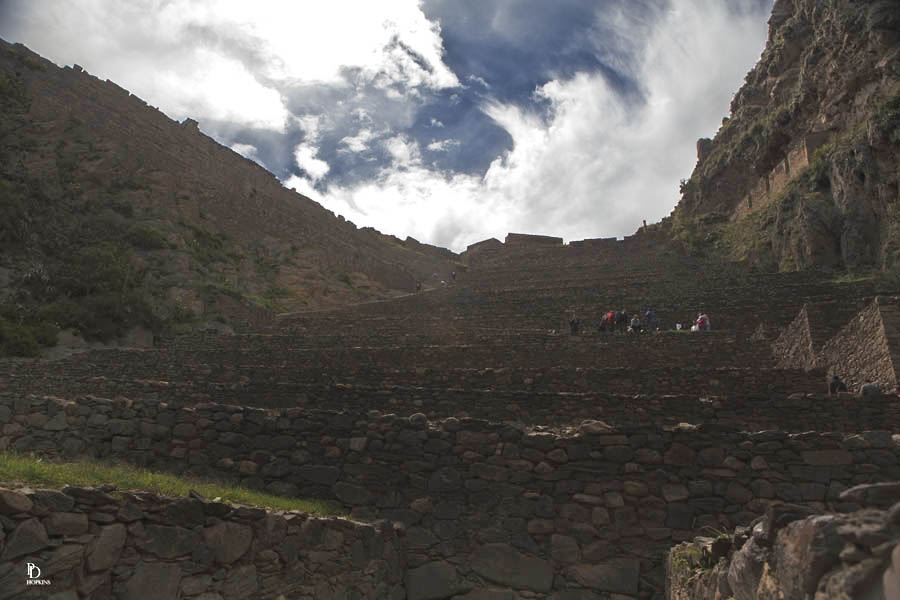
This is the view of the fortress from below, at the level of the town of Ollantaytambo. We did scale these many terraces to the top. I got the following picture looking out over the town, on the way up. In the upper left hand corner of the image, you’ll see a building perched on the side of the cliff with a path leading up to it. This building is the first of three granaries that the Quechan people built on that cliff. They were put there, exposed to cooler and drier air to prevent the grain from rotting.
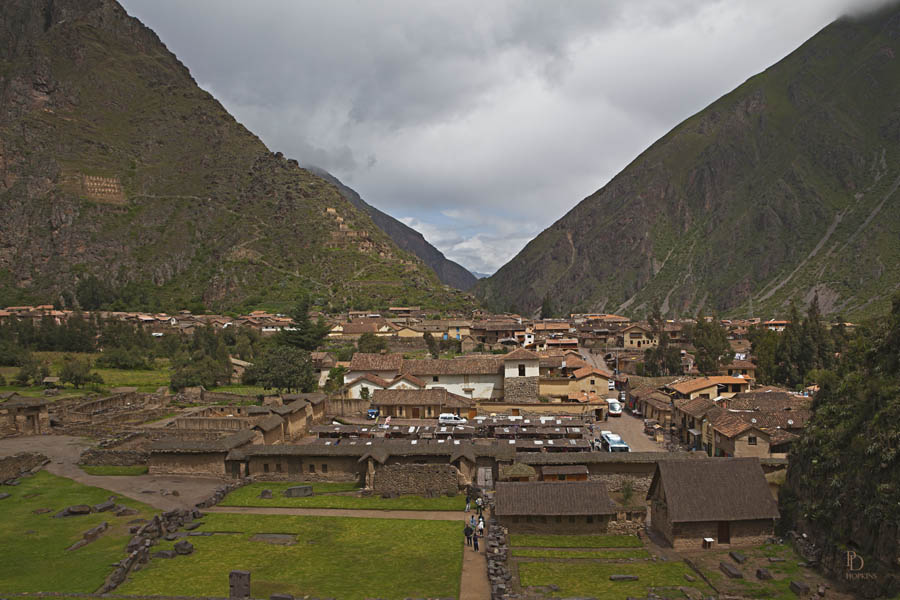
As a matter of clarification, the term “Inca” applies to the King of the Quechua people, often referred to as Incas. Manco Inca was the King at the time of the Spanish conquest of Ollantaytambo; the Quechua were his subjects. The descendants are still referred to as Quechua today and speak a language called Quechuan. The next photo shows two children we met in the village market below the ruins, garbed in traditional Quechua clothing.
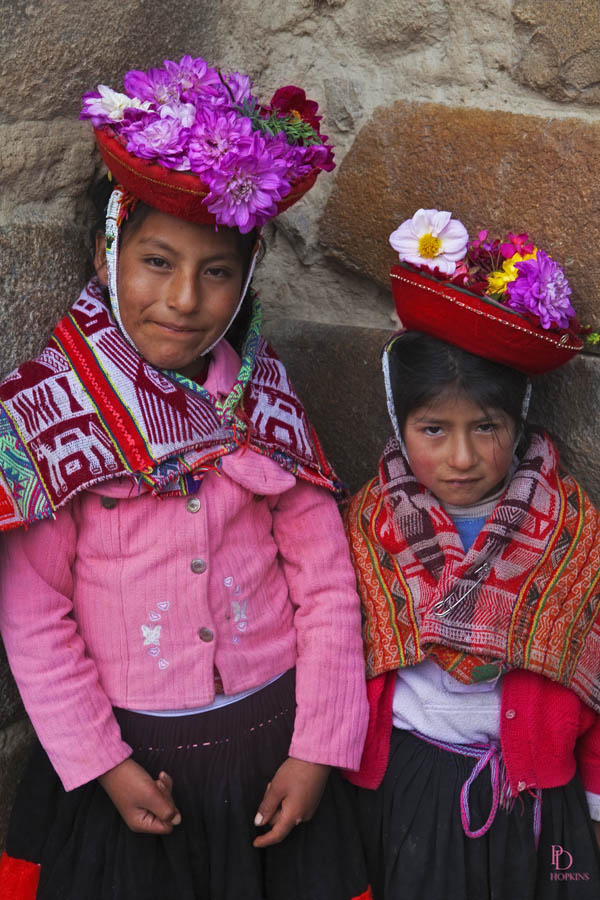
Moving on from Ollantaytambo, we paused for a mid-afternoon lunch at the Huayocari Hacienda, near Calca. A beautiful place, set in a scenic location, serving excellent meals. Following is a photo I took from the front of the hacienda, looking out over the valley. That’s a large eucalyptus tree on the left. Eucalyptus are very common in Peru and Chile.
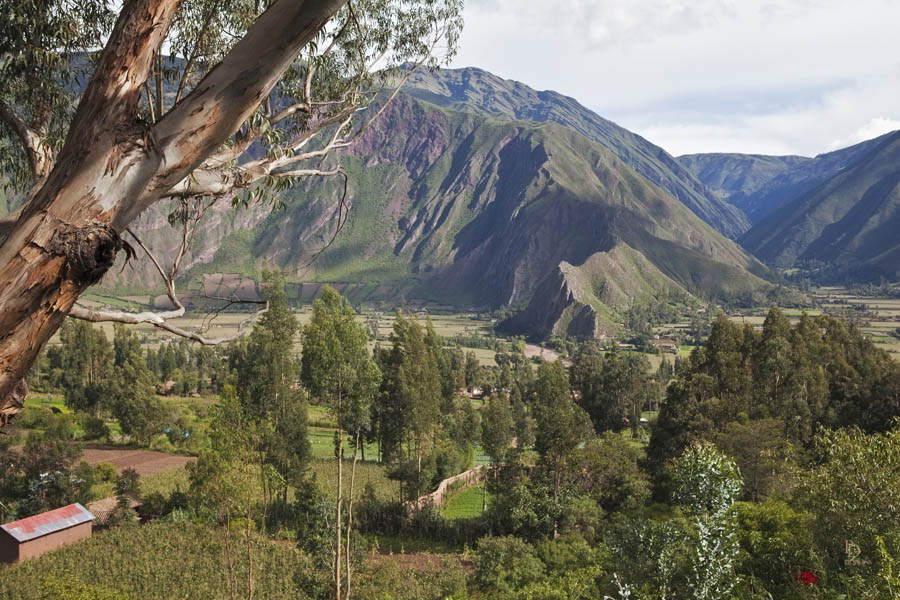
The trip back to Cusco was very scenic. After finishing lunch, we just sat back and enjoyed the views as the kilometres rolled by.
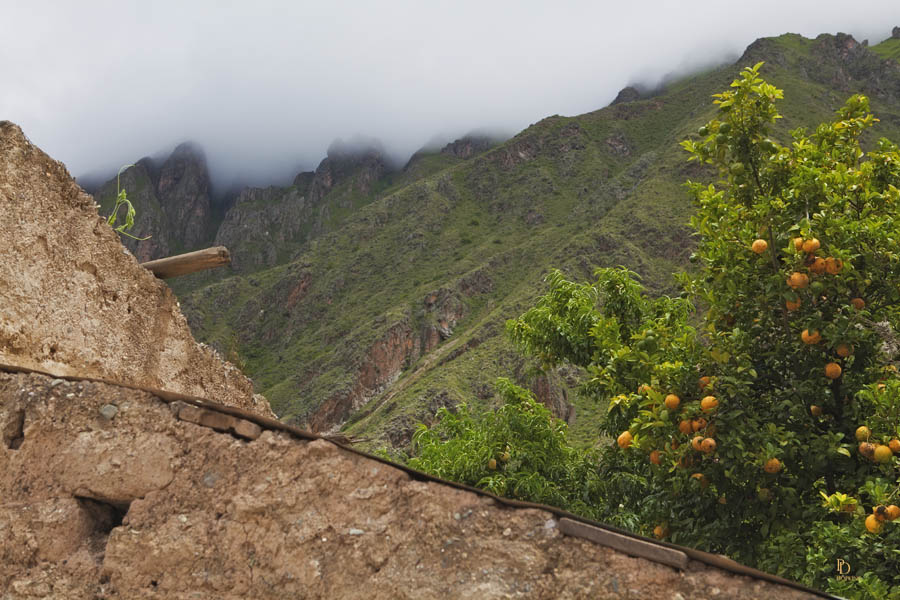
The Andes are considerably higher than the Rockies at home. Since this area is in the tropics, we didn’t see any snow covered peaks. Snow is present at elevations above 4,000 metres only (13, 125 ft) at this time of the year, summer. If only we could grow oranges in Canmore!

Peter! Your photo of the two little girls is a real cracker. Excellent work.
Awesome!